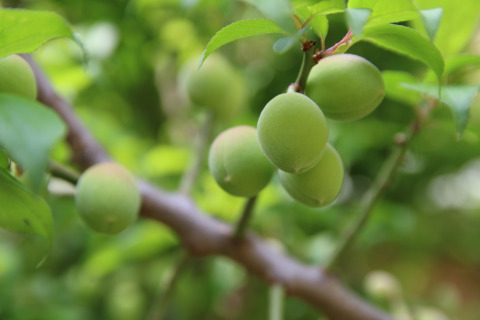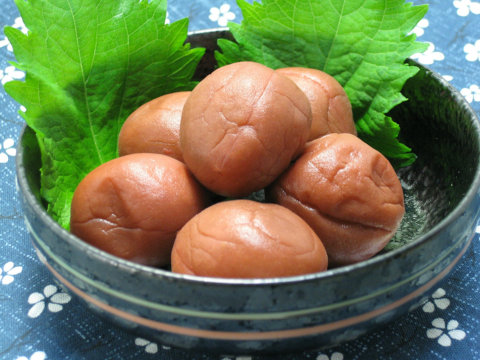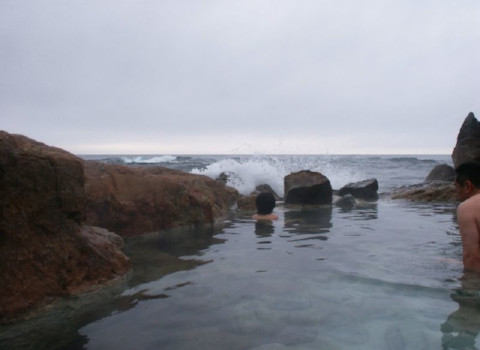[Tender & acoustic]
No.72 "Ashita no Kaze" by Masayoshi Yamazaki

Hi. Today's song is "Ashita no kaze" (Tomorrow's wind) by "Masayoshi Yamazaki".
Some reading article has been put away in a "Memo" tab in each section, so please click it to read.
If the "Memo" tab does not open, please enable the Java script in your browser.
Before starting the main contents of today, we would like to introduce little about Plum and Plum blossoms since we are in the midest of plum blossom season, and plum is one of the symbolic plants for East Asia including Japan. Please have a look if you have time.
Column: Plum blossom
(4min. to read)
(Skip to song)
- Plum
- Travel
- Hot spring
Plum
By the way, we are now in the home stretch of the plum blossom season.
From the gardens of private homes to the nearby parks, beautiful white and red blossoms are blooming, and emitting elegant fragrance.
Usually in June, some agricultural varieties of plum trees bear 3-4 cm sized(approx.) round fruits. Very roughly, there are 300-400 plums per tree.
(* Japan's rainy season in June is called "Plum rain(Bai-u)", possibly because of this harvest, according to a dictionary.)
These plums are mostly used for making plum liquor(Ume-shu), or pickled and half-dried plum(Ume-boshi).
This is a picture of "Ume-boshi".
"Ume-boshi" is basically a type of conventional Asian food, but much localized in the history.
Traditional "Ume-boshi" has a powerful sour taste(by natural citric acid). It is tasty for us, but maybe sensational for the foreign visitor's palates.
Recent Ume-boshi is more mildly seasoned with honey like ingredients, but still fairly sour.
In Japan, "Ume-boshi" is a standard side dish for the Japanese style breakfast. So, it will be served in the most of accommodations you might stay.
If you are taking buffet, "Ume-boshi" is freely available from the dish table, even you are having a western style breakfast.
Travel
Plum blossom can be seen in any part of Japan, and wherever you go, there are popular spot.(Temple, Shrine, park etc.) But please keep in mind for the season, since in Okinawa, the season is January, and in Hokkaido, it is usually May.
Finally in the main islands, it is Feb to April depending on the latitude.
If you are curious for plum products, one of the recommendable direction is "Minabe" town in "Wakayama prefecture".
Minabe is a town famous for the large plantation of plum and the best quality "Umeboshi" production. There is a few of museum on plum, and factory tours or experimental tours seems to be available at some leading factories. For more details, please check with the related sites.
Hot spring(Onsen)
From Kansai Airport(KIX) to the Minabe-town is 2-3 hours travel by car or train.(rent-a-car may be easier.) After the sightseeing, you can stay at hotels in Minabe. Or, move for 30 minutes by car or train, and staying at famous "Shirahama onsen" seaside hot springs, (or other way round), is also an interesting option.
(www.nanki-shirahama.net)
A picture of a natural hot spring on the edge of the sea at Shirahama onsen.
In fact, "Wakayama" has been a popular tourist destination even for the locals. Japanese people loves Wakayama's excellent hot springs, historic sites, quality sea foods, fruits and so on.
Because "Wakayama" is a large and mountainous prefecture, it takes some 6 hours by car from KIX to the most remote place.
Except the extreme, "Wakayama" and Kyoto, Osaka or Nara are still alternatively accessible with no particular hustle. Since they are neighbors in "Kansai region", and the local transport can connect each other within 6 hours the longest.
Anyway, if you like, please visit at any time.
Sorry for the too long detour. And thank you for reading.
Index
1. Song data
| Title | Ashita no kaze (Tomorrow's wind) |
|---|---|
| Artist | Masayoshi Yamazaki |
| Album Title | Transition |
| Catalog Number | UPCH-1081 |
| Track No. | 2 |
| Duration | 4:55 |
| Released | 2001 |
| Publisher | Polydor |
| Lyricist | Masayoshi Yamazaki |
| Composer | Masayoshi Yamazaki |
| Arranger | Masayoshi Yamazaki & Kitarō Nakamura |
About the creators
Masayoshi Yamazaki's music is actually fairly diversified from rock, blues, ballad, and pop music. Conversely, for the most of listeners, the image of his music is a bit sentimental, but elegant acoustic folk songs which his series of hit song indicated .
Actually, the folk song was very popular in Japan particularly from the '60s to the '70s, because it was delivering a honest sentiments of ordinary people in fashionable ways of that time.
But later, the message from folk song became somewhat out of date, then its prosperous period came to an end.
Almost surely, the folk song like emotional sentimental music is a Japanese favorite for a long time. So, if the sentimental song but given a timely melody is created, it is likely to be a hit song.
So, in this context, what Masayoshi Yamazaki has been achieved may be this thing.
In Masayoshi Yamazaki's music, traditional folk song like raw, crude and sentimental essences are apparently contained. In spite of this, the sound of his songs are well refined pop music.
It may be because of his talent for creating a harmonic melody, and more importantly, his outstanding guitar skill seems taking an important role.
In other words, his smooth play of the smooth melody is coating a sentimental lyric easy to swallow for the listeners today, just a baseless thought though.
Cover art
- Sound impressions
Simple & acoustic
This is a slight sentimental, but favorably positive mellow pop music in relatively slow rhythm.
An Arpeggio of the acoustic guitar and the rhythm of the shaker start the introduction, and the bass and the drums joins soon.
The electric piano plays a calm harmony, and clear natural sound of the electric guitar appends a decorative sound to the melody.
In the bridge, light optimistic sound of the harmonica joins, and plays joyful main passage skillfully.
Masayoshi Yamasaki's singing is little unique and characteristic, but his vocal is very gentle and relaxing on this song.
By the way, it seems MasayoshiYamazaki played at least 4 instruments on this song , namely, acoustic guitar, electric guitar, keyboard and the harmonica.
What a switch hitter!
- Reference
- About the artist
Nice mistake!
Masayoshi Yamazaki debuted in 1995 with single "Tsuki-akari ni terasarete"(Illuminated by the moonlight). Since then, 34 singles, and 15 original, 5 live, and 6 best albums has been released until now.
(Wikipedia, Masayoshi Yamazaki)
He had 5 years plus of the "incubation period" before debuting in 1995. And it seems this interval had an interesting effect on his later career.
He started working as a kitchen staff after graduation of high school. In 1990, he changed the job to a on-board loading assistant of a car-carrier vessel at the Matsuda car factory in Hiroshima.
In parallel, he started a live performance in a live music club, and established his "blues in acoustic" music style.
In 1991, he wrongly applied for an actor's contest, since the name of the host(Kitty film) were similar to a record company(Kitty records).
In spite of such comical mistake, he was chosen as a finalist of the contest among its 1000 plus applicants, and in the end, a honorable mention was given to him from the organizer.
Even more fortunately. there was a judge in the panel looking for a potential actor with singing ability. The judge was impressed by him, and recruited him for the music business.
Now, Masayoshi Yamazaki is a singer-songwriter who everyone knows. But the trigger of his first break was a 1997 movie he starred in.
He sang a theme music of this movie, and it became a sleeper hit. This success made him little bit famous.
In 1998, he played the lead on a TV drama series, and sang its opening theme as well.
(Just an aside, the ending theme of the series was sang by Izumi Katō. About Izumi Katō, please check our earlier post. - Post No.61 Ryuu-sei no highway)
The drama series gained fair level of popularity, and the main theme he made ranked the 3rd on the hit chart. And this pushed him to be a famed singer.
(Ref: Wikipedia, Masayoshi Yamazaki)
So, to be an actor was perhaps not in his original intention. But as an actual fact, acting has been a great support for him to be a leading singer-songwriter.
It is interesting, that the reality is often stranger than fiction.
- Samples from online music stores
AD : Free listening samples
Amazon JP(en)
recochoku.jp
Apple Music(jp)
2
7. Japanese Letters
| Song Title | 明日の風 (Ashita no kaze) |
|---|---|
| Artist | 山崎まさよし (Masayoshi Yamazaki) |
| Album Title | Transition |








Comments